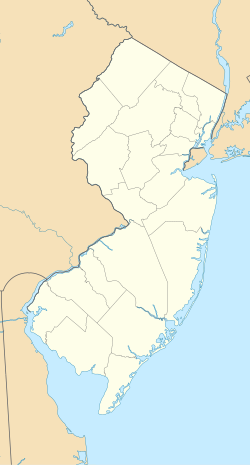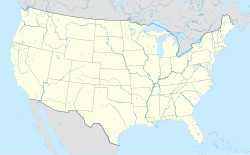Jugtown Historic District: Difference between revisions
| Line 36: | Line 36: | ||
The first European owner of the land now encompassing Jugtown was John Horner, who purchased 500 acres along the King's Highway, now [[New Jersey Route 27|Nassau Street]], in 1695.<ref name=":0" /><ref name=":3" /> In 1702, a further purchase of 200 acres to the east of his tract expanded his holdings to all of the land comprising the modern historic district.<ref name=":0" /> The boundary between Horner's initial tract and the 1702 expansion developed into a road, now Harrison Street, leading south to Josiah Davison's mill on the [[Millstone River]].<ref name=":5">Craig, p. 7</ref> |
The first European owner of the land now encompassing Jugtown was John Horner, who purchased 500 acres along the King's Highway, now [[New Jersey Route 27|Nassau Street]], in 1695.<ref name=":0" /><ref name=":3" /> In 1702, a further purchase of 200 acres to the east of his tract expanded his holdings to all of the land comprising the modern historic district.<ref name=":0" /> The boundary between Horner's initial tract and the 1702 expansion developed into a road, now Harrison Street, leading south to Josiah Davison's mill on the [[Millstone River]].<ref name=":5">Craig, p. 7</ref> |
||
A village began to grow around the crossroads in the mid-18th century. A beam in the basement of 342 Nassau Street inscribed with the year 1730 dates the earliest still-extant building in the community.<ref>{{Cite web |title=Green Oval Tour: A Snapshot of 18th Century Princeton |url=https://princetonhistory.org/green-oval-tour/342-nassau-street.html |access-date=2024-10-18 |website=princetonhistory.org}}</ref> Nearby clay pits south and west of what is now Nassau Street contributed to the growth of the community, and allowed Hornor to contribute to the construction of [[Nassau Hall]] in the 1750s.<ref name=":5" /> Around 1755, the Red Farm House was built on what is now Ewing Street.<ref name=":1" /> Joseph |
A village began to grow around the crossroads in the mid-18th century. A beam in the basement of 342 Nassau Street inscribed with the year 1730 dates the earliest still-extant building in the community.<ref>{{Cite web |title=Green Oval Tour: A Snapshot of 18th Century Princeton |url=https://princetonhistory.org/green-oval-tour/342-nassau-street.html |access-date=2024-10-18 |website=princetonhistory.org}}</ref> Nearby clay pits south and west of what is now Nassau Street contributed to the growth of the community, and allowed Hornor to contribute to the construction of [[Nassau Hall]] in the 1750s.<ref name=":5" /> Around 1755, the Red Farm House was built on what is now Ewing Street.<ref name=":1" /> Joseph Horner, John's grandson, possibly used bricks from a local clay pit to build the Joseph Horner House at 344 Nassau Street around the 1760s,<ref name=":4" /> but the house's lower story may date to earlier.<ref name=":3" /> During this same period, the two-story house at 341 Nassau Street was also constructed at the crossroads, as was a brick general store operated by local farmer and Princeton postmaster John Harrison.<ref name=":3" /><ref name=":4" /> 306 Nassau Street was constructed by someone named Vandeveer around 1760.<ref name=":1" /> In 1766, a potter named John Morton, from [[Wrightstown Township, Bucks County, Pennsylvania|Wrightstown, Pennsylvania]], bought a lot from Horner and established a pottery southwest of the crossroads. By 1789, production of jugs in the village was substantial enough to give the community its name.<ref name=":4" /> |
||
== Works cited == |
== Works cited == |
||
Revision as of 18:00, 18 October 2024
Jugtown Historic District | |
| Location | Portions of Nassau and Harrison streets; Evelyn Place |
|---|---|
| Coordinates | 40°21′14.2″N 74°38′44.0″W / 40.353944°N 74.645556°W |
| Area | 15 acres (6.1 ha) |
| Built | 18th century - c. 1918 |
| Architect | Multiple |
| Architectural style | Queen Anne, Shingle Style |
| NRHP reference No. | 86003670 |
| NJRHP No. | 1737[1] |
| Significant dates | |
| Added to NRHP | January 22, 1987 |
| Designated NJRHP | December 16, 1986 |
The Jugtown Historic District consists of a cluster of historic buildings surrounding the intersection of Harrison Street and Nassau Street in Princeton, New Jersey. The settlement dates to colonial times and is sometimes known as Queenston. It was home to the short-lived Evelyn College for Women from 1887 to 1897.[2]
Etymology
The name Jugtown likely originated from the pottery produced in the village by the Quaker Horner, also rendered Hornor,[3] family in the late 18th century.[2][4] The name was used colloquially, mostly in the 18th and 19th centuries, and is first recorded on a 1789 map.[5][6] The name Queenston, sometimes rendered as Queenstown, originated as one of a series of other royally-named settlements along the King's Highway, alongside Princeton Village, Kingston, and Princessville.[4][5][3] The name was first used in the late 18th century as a more respectable alternative to "Jugtown." Although the names are used interchangeably, the community is today more commonly known as Jugtown than Queenston.[2]
History
The first European owner of the land now encompassing Jugtown was John Horner, who purchased 500 acres along the King's Highway, now Nassau Street, in 1695.[2][3] In 1702, a further purchase of 200 acres to the east of his tract expanded his holdings to all of the land comprising the modern historic district.[2] The boundary between Horner's initial tract and the 1702 expansion developed into a road, now Harrison Street, leading south to Josiah Davison's mill on the Millstone River.[7]
A village began to grow around the crossroads in the mid-18th century. A beam in the basement of 342 Nassau Street inscribed with the year 1730 dates the earliest still-extant building in the community.[8] Nearby clay pits south and west of what is now Nassau Street contributed to the growth of the community, and allowed Hornor to contribute to the construction of Nassau Hall in the 1750s.[7] Around 1755, the Red Farm House was built on what is now Ewing Street.[4] Joseph Horner, John's grandson, possibly used bricks from a local clay pit to build the Joseph Horner House at 344 Nassau Street around the 1760s,[6] but the house's lower story may date to earlier.[3] During this same period, the two-story house at 341 Nassau Street was also constructed at the crossroads, as was a brick general store operated by local farmer and Princeton postmaster John Harrison.[3][6] 306 Nassau Street was constructed by someone named Vandeveer around 1760.[4] In 1766, a potter named John Morton, from Wrightstown, Pennsylvania, bought a lot from Horner and established a pottery southwest of the crossroads. By 1789, production of jugs in the village was substantial enough to give the community its name.[6]
Works cited
- Craig, Robert W. "Jugtown Historic District". National Register of Historic Places. National Park Service.
- Zink, Clifford (2024). Jugtown/Queenston: Jugtown Historic District. Princeton, New Jersey: Princeton Landmark Publications.
See also
References
- ^ "New Jersey and National Registers of Historic Places — Mercer County" (PDF). New Jersey Department of Environmental Protection — Historic Preservation Office. April 5, 2013. p. 8. Archived from the original (PDF) on May 16, 2013. Retrieved June 4, 2013.
- ^ a b c d e Craig, p. 5
- ^ a b c d e Zink, p. 2
- ^ a b c d Greenberg, Wendy. "Queenston". Princeton Magazine. Retrieved October 18, 2024.
{{cite news}}: CS1 maint: url-status (link) - ^ a b "Green Oval Tour: A Snapshot of 18th Century Princeton". princetonhistory.org. Retrieved October 18, 2024.
- ^ a b c d Zink, p. 4
- ^ a b Craig, p. 7
- ^ "Green Oval Tour: A Snapshot of 18th Century Princeton". princetonhistory.org. Retrieved October 18, 2024.



